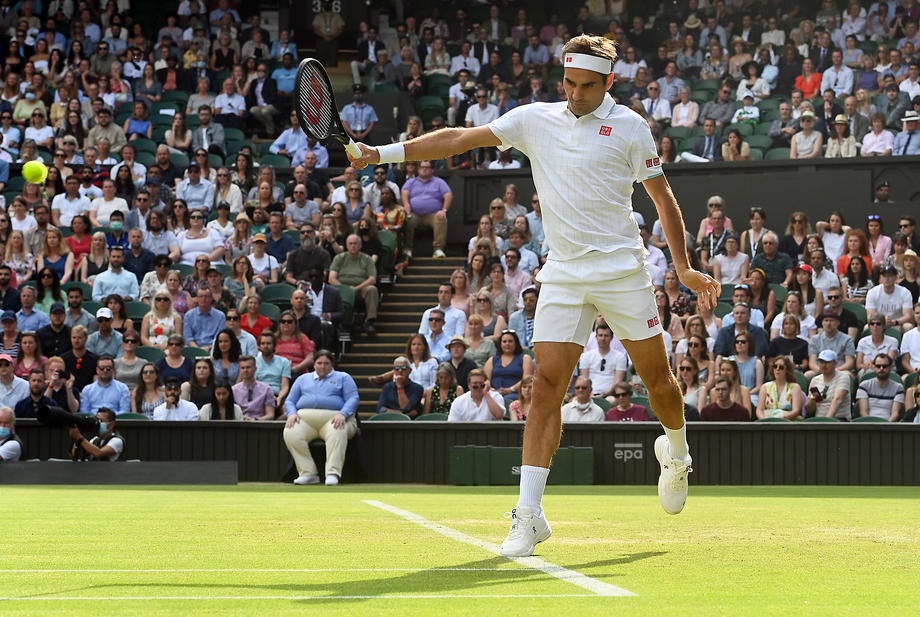- Australian Open Draws and Order Of Play for Friday, January 24, 2025
- Ricky’s pick for the Australian Open semifinal between Djokovic and Zverev
- Courageous Keys Stuns Swiatek for First Australian Open Final
- Australian Open Draws and Order Of Play for Thursday, January 23, 2025
- Ricky’s pick for the Australian Open quarterfinal between Sinner and De Minaur
- Australian Open Draws and Order Of Play for Wednesday, January 22, 2025
- Goran Ivanisevic Is No Longer Coaching Elena Rybakina
- Ricky’s pick for the Australian Open quarterfinal between Alcaraz and Djokovic
- Australian Open Draws and Order Of Play for Tuesday, January 21, 2025
- Tennis Report From Australian Open: Novak Making A Run by Alix Ramsay
- Australian Open Draws and Order Of Play for Monday, January 20, 2025
- Five-set frenzy continues in third round of Australian Open
- Australian Open Draws and Order Of Play for Sunday, January 19, 2025
- Pam Shriver’s Car Containing Grand Slam Trophies Stolen in California
- FREE GIFT WITH PURCHASE Of Incrediwear Supports
Wimbledon Championships 2019 • Roger Federer / Rafa Nadal Semi Reviewed As Well As A Look At Sundays Finals With Novak
- Updated: July 12, 2019
By Alix Ramsay
What we all want to know is: can he do it again? Can Roger Federer play as well again on Sunday as he did on Friday to beat Rafael Nadal? Because he did play well. Hell fire, did he play well.
Over the course of three hours and two minutes, Fed outplayed Rafa in every department – the serve, attacking the net and, most remarkably, from the baseline – to win 7-6, 1-6, 6-3, 6-4 to reach the Wimbledon final. From the first ball (an ace from Fed) to the bitter end, it was tennis of stupendous quality. And at the end, the 37-year-old Swiss raised his arms aloft in triumph and the jumped in the air in sheer delight. It was one hell of a match.
No matter that Fed is the greatest player ever to pick up a racket, him with his 20 grand slam titles; he is playing with the very nearly greatest player ever to pick up a racket – and most certainly the greatest ever to wield that racket on a clay court – in Rafa. Rafa sits with 18 major titles.
Let us not forget the youngest of the Big Three, Novak Djokovic. Five years younger than Fed, he is the one of that trio who is still regularly making it to grand slam finals and, for the most winning them. He has 15 big trophies so far and many more years left in him than the other two.
That leaves Fed as the GOAT for now but Rafa, the other GOAT in his own right, is closing in fast. And Djoko has his heart set on supreme GOATdom: overtaking the others and leaving them to eat his dust as he rewrites the history books yet again.
As an aside: who would be a record keeper these days. Once upon a time, the archivists would break out the Tippex every summer and paint over Pete Sampras’s Wimbledon record and overall slam tally. With a sharpened pencil, they would scribble in the increased the trophy count (one more in each column) and then close the book. Their work was done for another year.
When Pete called it a day, the archivists thought they could take early retirement, or at least the odd day off. Who was going to beat seven Wimbledons and 14 slams? Don’t be daft. And then along comes Fed who, these days, is beating his own, many, ridiculous records almost weekly, Rafa who is racking up titles won at certain tournament to the point where is no longer space on the page to fit the numbers while Djoko is simply hoovering up everything in sight.
Really, who’d be an archivist? Particularly now that Fed is back in the Wimbledon final and plays Djoko on Sunday.
As the semi-final began, the excitement levels had reached knicker-wringing levels. It had been 11 years since Rodge and Raf had met at Wimbledon. That final in 2008 – Raf won in near-darkness at 9.15pm on a damp night – set the bar at a ludicrously high level. Some thought it was the greatest match ever played, only equalled (possibly) by the Rafa-Djoko semi-final last year. (See what we mean about being an archivist?)

The fear was that this chapter of their 40-match rivalry might be a damp squib. Rafa had played brilliantly in round after round; Fed had been a bit up and down as he made his way to last four. Would it be one-sided?
Then again, this was Roger and Rafa, this was a Wimbledon semi-final, this was important. This was not just a stepping stone to the final, this was two of the sport’s greatest going head to head in the 15th year of their remarkable rivalry. It meant everything to both of them for so many different reasons.
We had an opening set of cat and mouse – Rodge had a break point; Rafa whipped it back again – until the tiebreak. That is when Roger waited, watched and then pounced. First blood to Switzerland.
In the second set, Rafa took more defensive action in Fed’s service games. He backed away from the baseline, especially on second serves, to give himself a better look at what was coming at him. At the same time, Fed’s level dropped a little. It was over in a flash.
But then in the third and fourth sets, Fed took on Raf at his own game. He was winning from the baseline. He may have been playing some of those groundstrokes as a near-half volley from the back – if he had to play from the back, he was still not going to venture too far from the baseline – but he was rallying and he was winning. A 23-stroke rally, a 25-stroke rally and then, in the fourth set, a 26-stroke rally. He was cracking his backhand, that aggressive, reinvented backhand that won him the 2017 Australian Open title against Rafa. He was moving like a 25-year-old. He was going to win come hell or high water. And win he did.

“He is always able to do the most difficult things easy,” Rafa said. “He’s able to move inside the court quicker than no one. He puts pressure on the opponent all the time because he has the ability to take the ball earlier than nobody else. That’s probably the most difficult thing to make that happen, and he is able to do it so well.
“He plays very inside the court. He’s not giving you sometimes time to open the court.
“You will not make him miss for speed of the ball. You need to make him miss because you put him out of position, no? Probably I didn’t hit the ball enough clean to make that happen this afternoon. Then you are in a situation that he plays in his comfort zone, and is difficult from there for me – for me and for everybody, I think.”
But can he do it again on Sunday? Fed may be mighty but he is also 37. When he come off court he admitted to being absolutely exhausted. The physical effort was bad enough but the mental pressure of staying in the moment, in the point, from start to finish was like running the marathon in a diving suit. He knew if he was not in total mental lockdown, Rafa would punish him. Yet he survived. He won with a set to spare. He was through to his 12th Wimbledon final. Rafa beat him in the 2008 final, Djoko beat him in the 2014 and 15 finals but Fed is a better player now than then (strange though that sounds).
Between now and Sunday afternoon, Fed will take it easy. There is nothing extra he can do to make himself a different player to face Djokovic; all he can do is recover from the semi-final, keep everything ticking over nicely and then do what he does best when the final begins.
“I don’t think there’s much I need to do in terms of practice,” he said. “This is like a school: the day of the test you’re not going to read, I don’t know, how many books that day. You don’t have the time anyhow.
“It’s quite clear the work was done way before. I think that’s why I was able to produce a good result today. It’s been a rock solid year from my side, won in Halle. Stars are aligned right now. From that standpoint I can go into that match very confident.”
He worked his socks off in training and in practice in the months leading into this final to get ducks lines up in a row for the clay and then grass court seasons. Now he thinks his stars are aligned similarly.
So can he do it again? Tune in again at 2pm, BST, on Sunday. Those archivists may find themselves awfully busy again come teatime.






